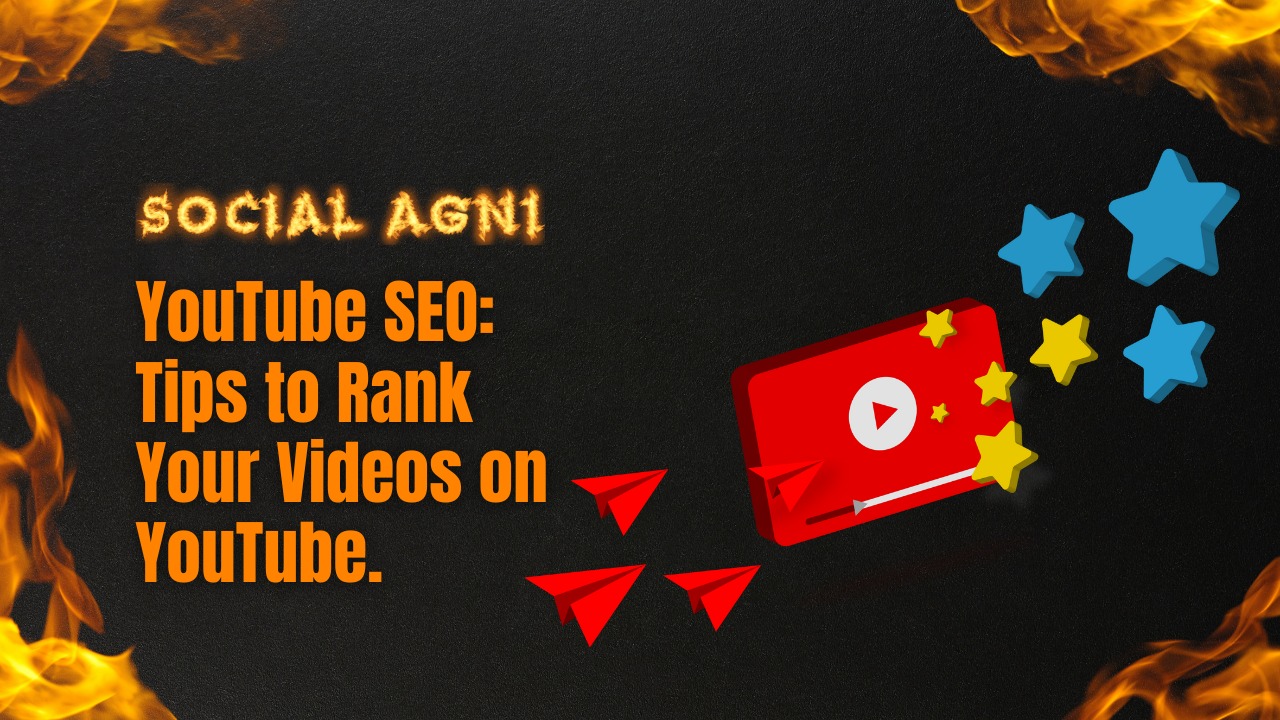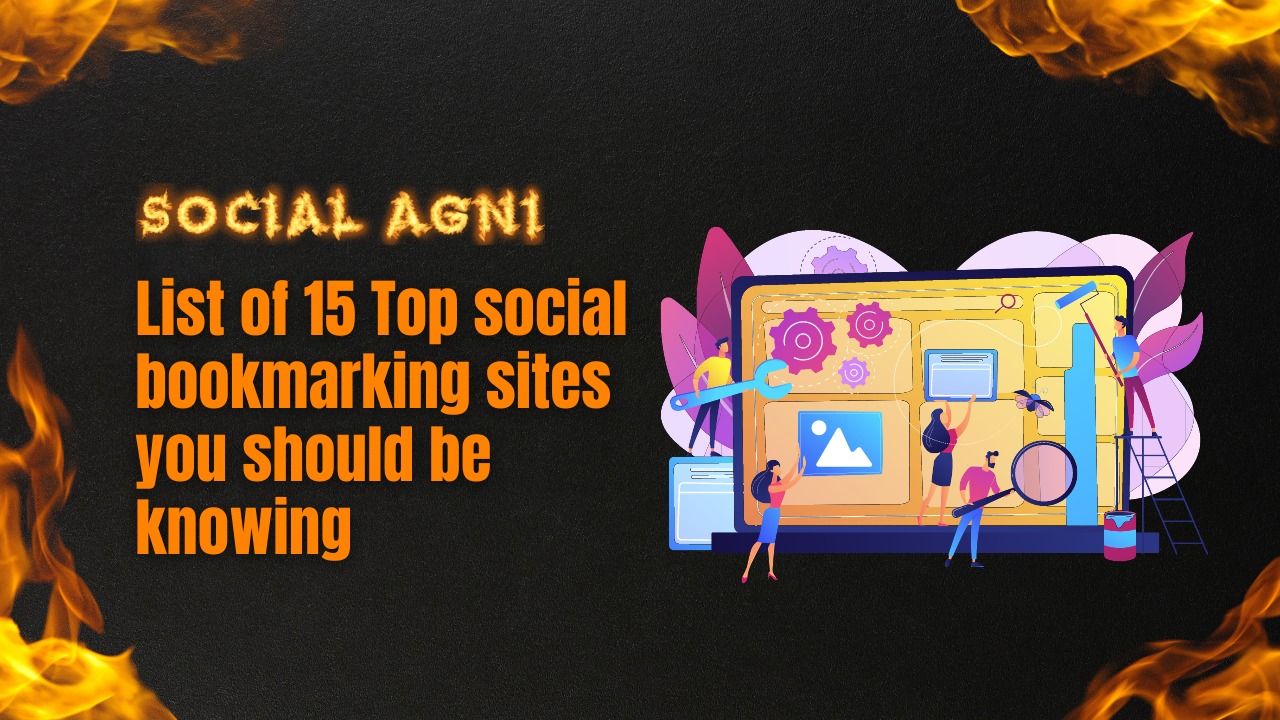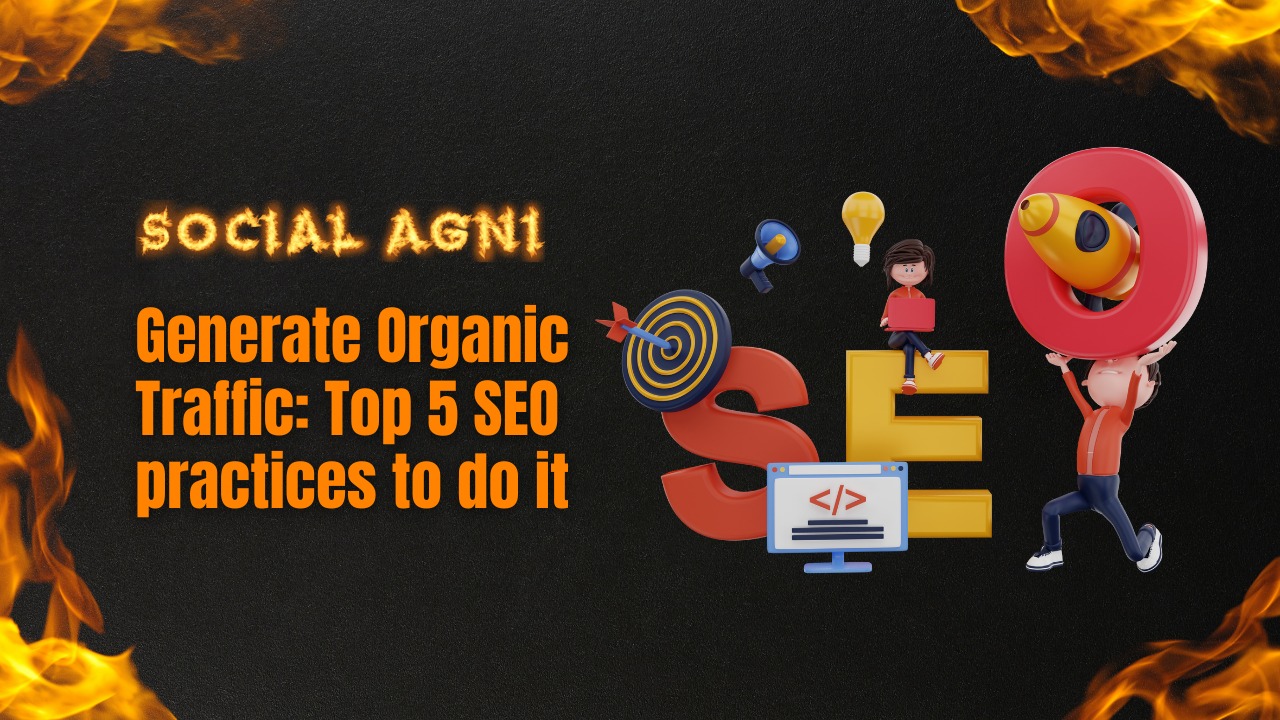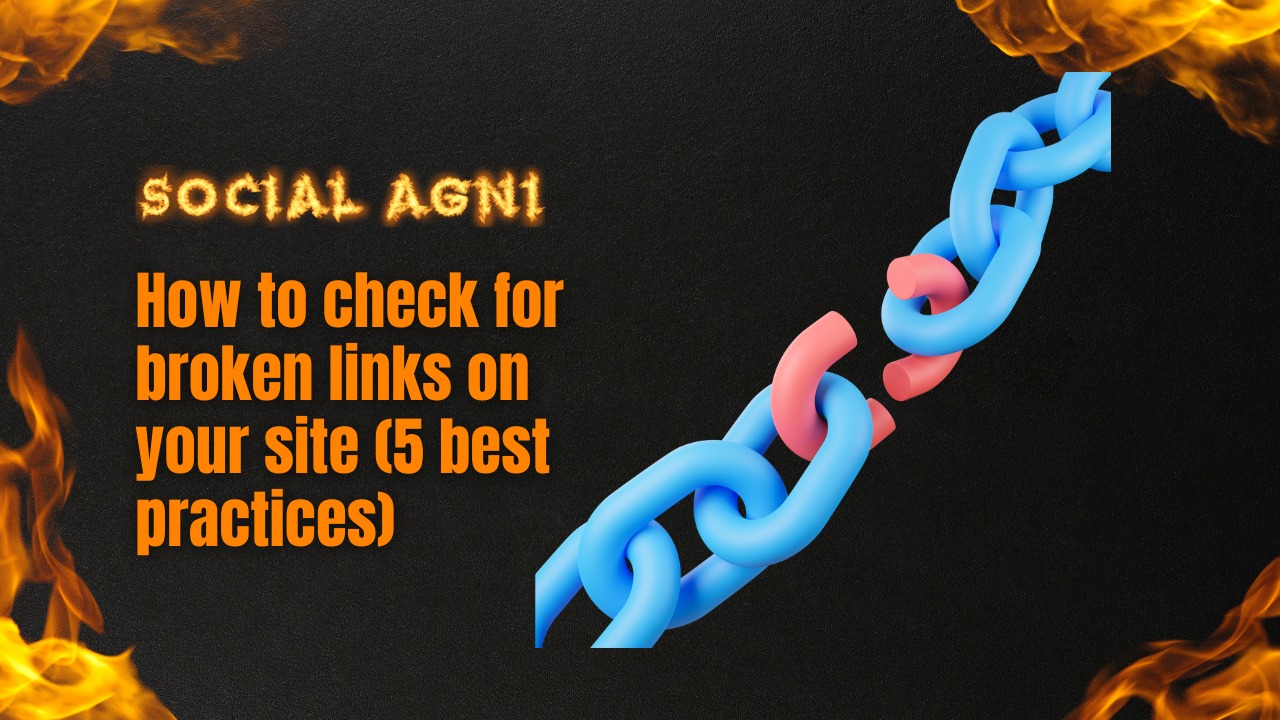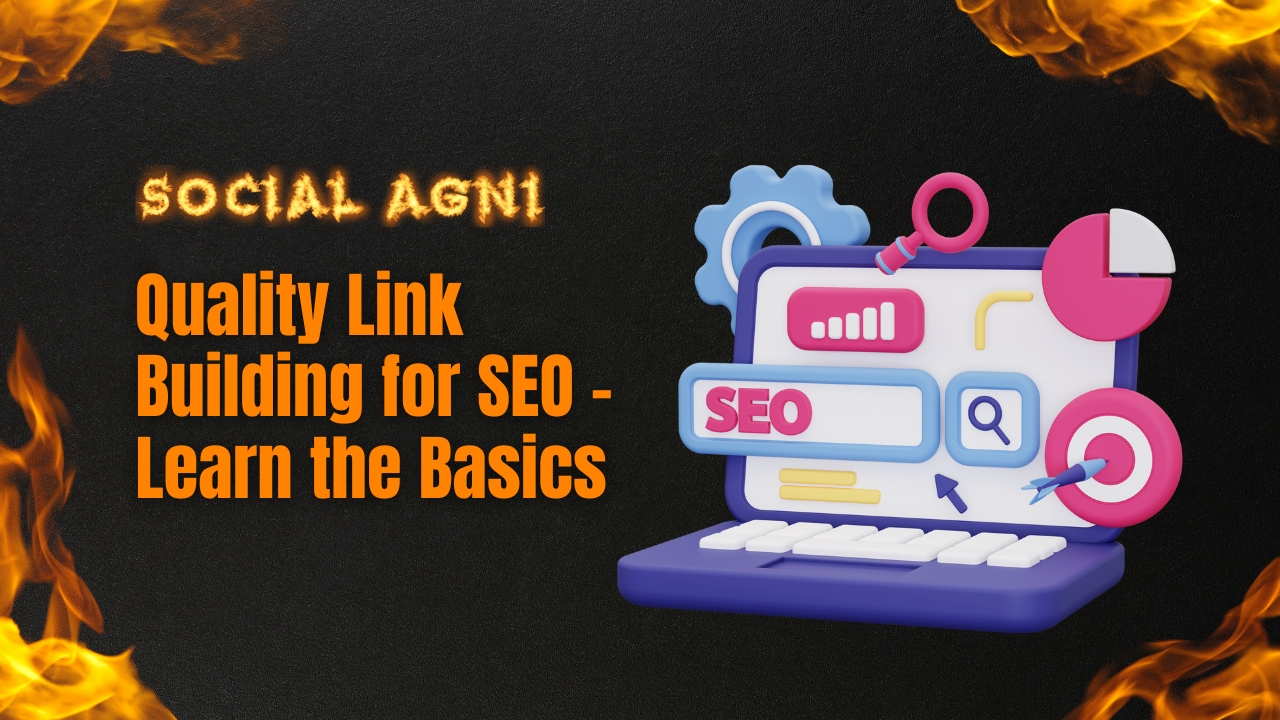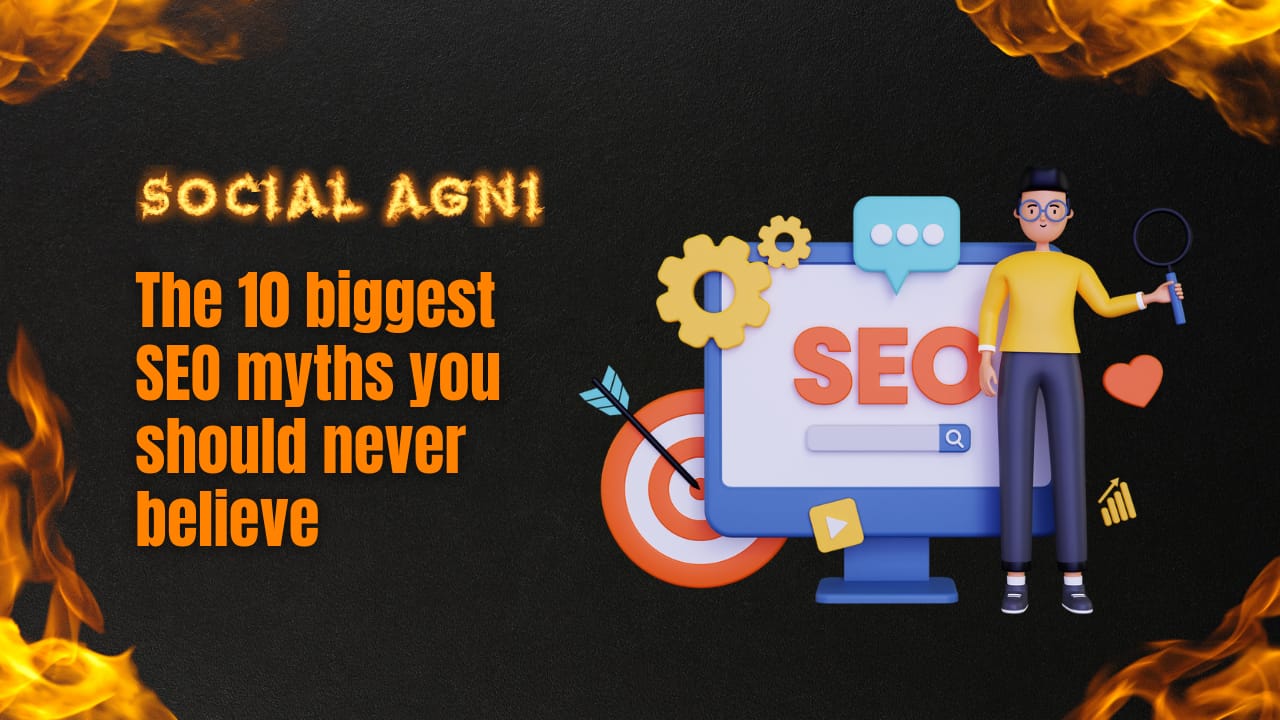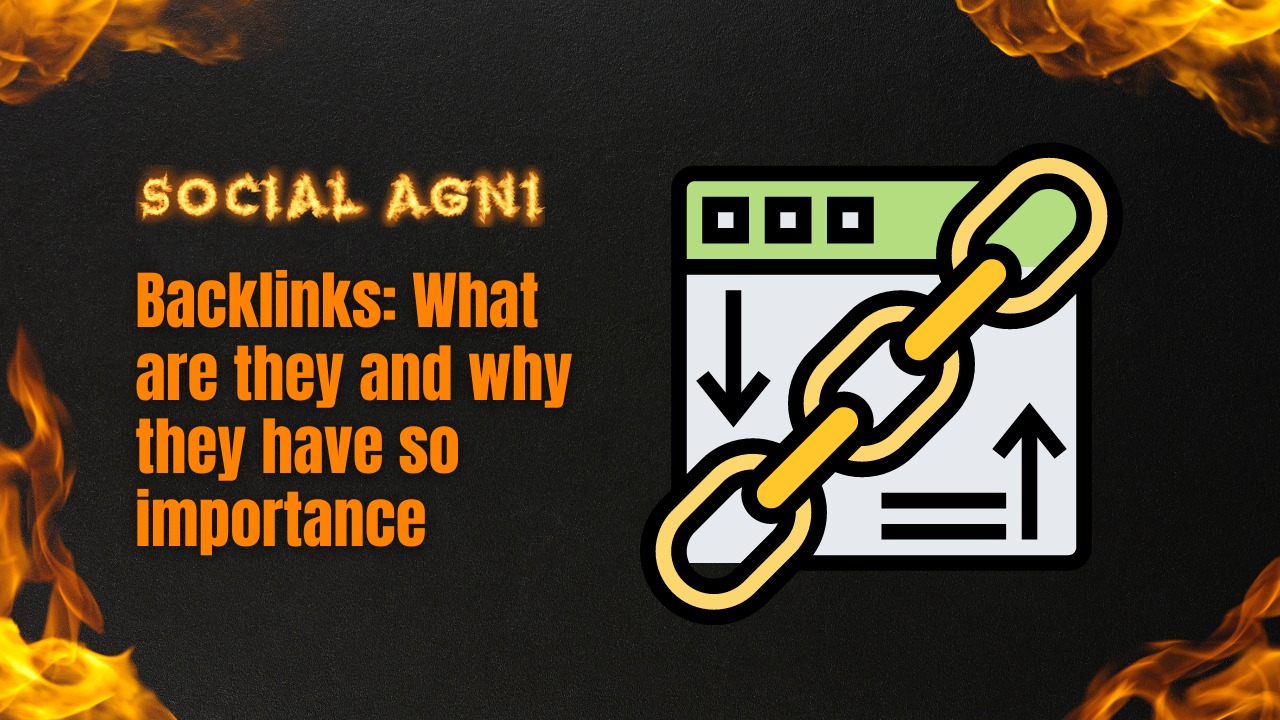With over 2 billion monthly active users, YouTube is the second largest search engine inside the global, making it an extremely valuable platform for groups and content creators alike. However, with so much content available on the platform, it may be difficult to face out and get your videos observed. That’s wherein YouTube search engine optimization comes in. By optimizing your movies for search engines, you can increase your visibility and reach greater visitors. In this text, we’ll percentage a few tips to help you rank your videos on YouTube. Optimize Your Video Title Your video name is one of the most essential elements in figuring out your video’s ranking in seek effects. It’s essential to consist of your number one keyword for your identity, as this facilitates YouTube recognizing the content of your video and improving your ranking for applicable seek phrases. However, there are numerous other techniques you could use to optimize your video titles for search engines like google. One effective approach is to use emotional triggers for your titles to make them more compelling and attention-grabbing. Using phrases like “unexpected” or “shocking” can assist in increasing clicks and engagement. Another effective approach is to apply numbers to your titles, along with “5 Tips for Better search engine marketing” or “10 Ways to Improve Your YouTube Channel”. This kind of name is each descriptive and attention-grabbing, that can help boom clicks and engagement. It’s also crucial to hold your titles concise and clean to read. Avoid the use of complex or technical language, as this will make your titles harder to recognize and less appealing to visitors. A correct rule of thumb is to keep your identity under 60 characters, that is the maximum period so that it will display in search results. Finally, make certain your identity correctly displays the content material of your video. Avoid the usage of clickbait or deceptive titles, as this could result in a negative user enjoyment for visitors and hurt your universal SEO. Use Keyword-Rich Tags Tags are an essential manner to help YouTube understand the content material of your video and improve your ranking in search outcomes. When choosing tags to your films, it is vital to encompass applicable keywords that should describe the content material of your video. One effective approach is to use long-tail key phrases in your tags, which might be greater specific and much less aggressive than broader key phrases. For instance, in preference to using “health” as a tag, you may use “beginner health workouts” or “at-domestic exercise pointers”. This let you rank for more precise seek terms and boom your visibility in seek consequences. Another powerful strategy is to use tags which might be related to your primary key-word, however not exact suits. This will let you rank for a wider range of search terms and boom your visibility in search outcomes. It’s additionally vital to keep away from the usage of too many tags or irrelevant tags, as this could hurt your search engine marketing and result in terrible user enjoyment for viewers. A right rule of thumb is to apply five-10 applicable tags for every video, and to make sure each tag accurately reflects the content of your video. Write a Compelling Video Description Your video description is an opportunity to provide extra context approximately your video and persuade viewers to look at. In addition to such as your primary keyword, there are several other strategies you could use to optimize your descriptions for search engines like google and yahoo. One effective method is to encompass timestamps for your descriptions, that could help visitors discover particular sections of your video greater easily. This also can enhance your watch time, which is a key element in YouTube SEO rating algorithm. Another powerful strategy is to encompass a name-to-action (CTA) in your description, which includes asking viewers to subscribe to your channel or take a look at your website. This can assist increase engagement and pressure extra site visitors for your different on-line systems. It’s additionally vital to put in writing targeted and accurate descriptions that accurately replicate the content material of your video. Avoid the use of clickbait or deceptive descriptions, as this will result in a terrible user revel in for viewers. Finally, ensure your description is formatted in a smooth-to-read and visually appealing manner. Use bullet factors, paragraphs, and other formatting gear to make your description greater readable and engaging for viewers. Add Closed Captions to Your Videos Closed captions are an essential manner to make your motion pictures extra handy to all viewers, along with folks that are deaf or tough of listening to. They can also enhance your search engine optimization by supplying additional metadata for YouTube’s search algorithm to research. When growing captions on your movies, it’s critical to use correct and descriptive language that displays the content material of your video. Avoid the usage of computerized captioning tools, as these can regularly produce misguided or nonsensical captions that could harm your SEO and lead to a terrible personal experience for viewers. Instead, don’t forget using an expert captioning carrier or developing your own captions using YouTube’s built-in captioning tool. This can help make certain that your captions are correct, properly-formatted, and easy to examine. Use Engaging Thumbnails Your video thumbnail is the first factor viewers see while surfing via seek consequences, so it is crucial to create thumbnails which are appealing and tasty. One powerful method is to apply first rate photographs or screenshots from your video, as this could help viewers apprehend the content of your video and improve your click-thru rate (CTR). Another powerful strategy is to use clear and concise textual content to your thumbnails, which could assist visitors recognize the content of your video and improve your CTR. Make sure to apply huge and smooth-to-examine fonts, in addition to descriptive language that as it should be displays the content of your video. It’s also essential to use constant branding to your
Bookmarking a website approach saving the website’s URL or internet copy with a listing of stored websites or net pages, additionally called bookmarks. This list of bookmarks is generally saved within a consumer’s web browser or on a social bookmarking web site. By bookmarking websites, users can quickly and easily access their favored web sites while not having to keep in mind the exact URL or search for it again. Bookmarking additionally lets in users to arrange their favorite websites into classes or folders, making it less complicated to locate specific content in a while. Here are the list of top 15 bookmark sites you should be knowing: 1.Reddit: Reddit is a famous social information and dialogue platform wherein users can publish and vote on content material consisting of text posts, links, and snapshots. The platform is prepared into thousands of communities known as “subreddits,” which might be centered on unique subjects consisting of news, technology, sports, amusement, and more. Users can subscribe to subreddits that interest them and participate in discussions by means of commenting on posts or growing their own. The most famous posts on Reddit upward thrust to the pinnacle of the web site’s homepage or unique subreddits based totally on consumer upvotes, and the least popular posts are buried or removed. Link-https://www.reddit.com/ 2.Pearltrees: Pearltrees is a visible social bookmarking tool that allows customers to prepare, discover and proportion their favored web sites, articles, images, and different on-line content material in a unique and interactive way. Users can create their very own “pearls,” that are visual bookmarks that contain hyperlinks to internet pages, and then group them into customizable “pearltrees” primarily based on subjects or pastimes. These pearltrees can then be shared with others, taking into consideration a collaborative approach to content material curation. Pearltrees also offers a seek function that lets in users to discover new content associated with their pastimes and to discover the pearltrees of different customers. Link-https://www.pearltrees.com/ 3.Start.me: Start.Me is a personal bookmarking and homepage provider that permits you to create a customized homepage with your favourite bookmarks, information feeds, and widgets. With Start.Me, you could create more than one pages of bookmarks and organize them into categories, making it clean to discover the web sites you want speedy. Start.Me gives a lot of widgets that you could add on your homepage, consisting of weather forecasts, news feeds, calendars, and extra. You also can customise the format and layout of your homepage to fit your preferences. One of the advantages of the use of Start.Me is that your bookmarks and homepage are to be had from any tool with an internet connection. This approach you can get admission to your favorite websites and widgets out of your laptop laptop, computer, tablet, or smartphone. Link –https://about.start.me/ 4.Pinterest: Pinterest is a social bookmarking and visual discovery platform that lets in users to shop and proportion snap shots and films, called “pins,” to virtual pinboards. Users can create boards on unique subjects or topics and store pins to those boards, organizing their interests and inspirations in a visually appealing way. Pinterest is used by people for private hobbies and hobbies, in addition to corporations for marketing and selling their services or products. Users can follow other customers and boards to find out new content material and also can look for the use of key phrases or classes. Link-https://in.pinterest.com/ 5.StumbleUpon/Mix: StumbleUpon became a social bookmarking and discovery platform that allowed customers to find out new websites and online content material based on their pursuits. In 2018, it became relaunched as Mix, which is much like StumbleUpon but with a renewed cognizance on personalized content material discovery. Users can create collections in their preferred web sites, articles, photographs, and videos, and can also follow different customers and collections to discover new content. Mix uses algorithms to advise content material based on a person’s pastimes and activity at the platform, and also consists of a search function that lets in users to discover new content material based on precise keywords or topics. Link-https://www.stumbleupon.com/ 6.Digg: Digg is a social news and content material discovery platform that allows customers to submit and vote on news tales, articles, and different content material from across the internet. Users can vote on content material they like, and the maximum popular tales upward push to the pinnacle of the website online’s homepage. Digg also includes a function referred to as “Digg Reader,” that’s an information aggregator that lets in customers to comply with and prepare their favored RSS feeds. In addition to the website, Digg is likewise to be had as a cell app, making it clean for customers to get right of entry to and find out new content on-the-cross. Link –https://digg.com/ 7.Slashdot: Slashdot is a era information and dialogue website that functions information tales and articles related to technological know-how, generation, and geek way of life. Slashdot is understood for its active community of customers who engage in discussions and debates on a lot of tech-related topics. One of the unique functions of Slashdot is its moderation machine. Users can price comments on a sliding scale from -1 to +five, with higher-rated feedback performing greater prominently within the discussion thread. This device enables to promote outstanding remarks and discussions while suppressing spam and coffee-first-rate content material. Slashdot also capabilities a whole lot of person-generated content, together with authentic articles, weblog posts, and person-submitted testimonies. Users can put up their personal testimonies to the web site, which are then reviewed via editors and published if they meet first-class standards. Link-https://m.slashdot.org/ 8.LinkaGoGo: LinkaGoGo is an online bookmarking provider that permits you to save and organize your bookmarks in a single valuable vicinity. With LinkaGoGo, you could get right of entry to your bookmarks from any device with an internet connection, making it easy to discover the web sites you want fast and without problems. One of the key features of LinkaGoGo is its assist for tags. You can upload tags to your bookmarks
Today’s businesses rely largely on web visitors for both lead generation and customer purchases. Organic traffic, which refers to users that arrive at your website through unpaid search engine results, is one of the most important kinds of online traffic. Your website’s organic According to how high it appears in search engine results, traffic will rise. The practice of improving a website’s exposure on search engine results pages is known as SEO or search engine optimization. This article will go through five of the best SEO tactics for increasing a business’s organic search traffic. Search engine optimization (SEO) copywriting, link building, content creation, and technical SEO are a few examples. By boosting their visibility in SERPs, their proportion of organic traffic, and other metrics, these strategies may assist firms in enhancing their online presence. Top 5 SEO Practices to Generate Organic Traffic: If you enjoy improving organic traffic to your website, you must involve a combination of SEO tactics. Here are the top 5 SEO strategies utilize to boost organic traffic: 1. Keyword Research and Optimization: Improving your website’s search engine rating and attracting more organic visitors requires diligent attention to detail, including thorough keyword research and optimization. Your website’s search engine visibility may be improved by including the keywords your target audience is using to find items and services like yours in the content on your site. Use Google’s Keyword Planner, SEMrush, or Ahrefs to find relevant keywords. Using these resources, you may find profitable, high-volume keywords. In addition to finding broad keywords, these resources can help you find long-tail keywords that are more precise and useful. Your content must be pertinent to your audience’s needs, engaging, and beneficial. Websites may raise their search engine rankings and the amount of time visitors spend on the site by catering to their needs and interests with helpful content. The success of keyword optimization also depends on performing keyword research and updating content often. Because of how quickly search trends and user behavior can change, it’s essential to always employ the most up-to-date terms and refresh your content. Increase your organic traffic by conducting keyword research and optimizing your website for search engines. 2. Content Creation and Optimization: Writing engaging content is crucial to SEO. Your website content must be relevant, engaging, and valuable. Useful content boosts search engine rankings and user engagement. If you want your material to resonate with readers, you need to tailor it to their wants and interests. Content and on-page SEO are invaluable. The text, headers, and visuals should include relevant keywords and be structured for easy reading. For context and relevancy, include internal and external links. Content quality must come first. It’s crucial to frequently publish well-researched, informative, and engaging material. If you establish your website as an industry authority, it will rise in search engine ranks. Regular content audits and updates are also necessary for effective content development and optimization. Examine your current material and think of ways to improve it to do this. To do this, you can fix any errors or omissions you see, add extra sections or examples, or just streamline and organize your work. Finally, to attract organic traffic, search engine optimization (SEO) significantly relies on producing and optimizing content. You can increase your website’s traffic, leads, and conversions by tailoring your content to your audience’s preferences, implementing on-page SEO best practices, and doing frequent content audits and upgrades. 3. Backlink Building: To boost your website’s search engine rankings and get more organic visitors, link building is a crucial part of off-page SEO. When other websites connect to yours, this is called a backlink and it shows that you’re an authoritative resource in your field. Backlinks are an indicator of your content’s quality and relevance to search engines. Creating high-quality content that other sites will want to connect to is essential if you want to get inbound links. To do this, you must first learn about and then cater to the specific wants and interests of your intended audience through your content. You may also reach out to related websites and offer to write guest articles for them or work together on content. Content marketing is another powerful strategy for increasing inbound links. To maximize your content’s exposure and its ability to garner links, you should promote it using social media, email marketing, and other methods. In addition, you may find journalists and bloggers that are seeking expert sources in your field by using platforms like HARO (Help a Reporter Out). It’s more vital to create high-quality backlinks than to create a large number of them. Your search engine rankings and online reputation might potentially take a hit from spammy or low-quality backlinks. Instead, you need to work on getting connections from reputable, authoritative sites in your area. Monitoring your website’s backlink profile and disavowing any spammy or low-quality connections is just as vital as gaining backlinks. Backlinks to your site may be monitored for problems using services like Google Search Console or Ahrefs. In sum, backlink building is a crucial part of search engine optimization that may boost your website’s visibility in SERPs and bring in more visitors naturally. Establishing your website as a reliable resource and attracting more visitors will lead to more leads and sales for your company if you focus on producing and distributing high-quality content. 4. Technical SEO: Improve your website’s search engine rankings and get more targeted organic traffic by focusing on the technical aspects of SEO. To improve your site’s crawl ability and indexation by search engines, you should optimize its code, structure, and speed. Website speed optimization is an essential part of technical SEO. Websites that load quickly not only benefit visitors but also perform higher in search engine results. You may improve your website’s load time by using a content delivery network (CDN), compressing your images, and minifying your CSS and JavaScript scripts. Mobile optimization is also a crucial part of technical SEO. Your website must be compatible with mobile devices
Having a website has become increasingly important for businesses and individuals in today’s increasingly digital environment. In addition to providing information and facilitating contact, a website may also be used to promote and sell goods and services or to get exposure to personal initiatives. However, a website alone is not enough to guarantee success in the digital sphere. Maintaining an up-to-date, relevant, and user-friendly website is crucial. Search engines also punish sites with lots of broken links since they think it means the content isn’t very good. Implementing best practices for checking and fixing broken links is crucial if you want your website to be free of them. Improving your website’s performance, user experience, and trustworthiness may be achieved by routine monitoring for broken links and rapid repair. Using tools, doing manual tests, regularly monitoring, correcting broken links, and more are all covered in this article as well as the five recommended practices for checking for broken links on your site. In summary, developing a website is only half the battle in terms of ongoing upkeep. If you care about your website’s search engine rankings, user experience, or credibility, you should check for broken links regularly. Use Tools to Check for Broken Links: One of the simplest methods to check your website for broken links is by using internet tools. Once these crawling tools have found any broken links on your website, you can quickly fix them. Here are some tools for link checking you might want to use: Google Search Console With the use of Google’s free service, Google Search Console, you may monitor the visibility of your website in Google search results. There’s also a report called “Crawl Errors” that will show you where your site has broken links. You must include Google Site Ownership Verification satisfied before you can utilize these benefits. Screaming Frog If your website has broken links, cutting pages, or any other problems, Screaming Frog can discover them for you. The free edition has a limit of 500 URLs, while the subscription version gets access to more advanced capabilities. W3C Link Checker Check your website for broken links with the help of the W3C Link Checker, a free online tool that gives you a comprehensive report of any problems it finds. It works with several markup languages and style sheets, including HTML, XHTML, CSS, and RSS. Dead Link Checker Checks your site for dead links and gives you a comprehensive report of the problems it finds. The free version examines up to 2,000 pages, while the premium version includes more options. Ahrefs This paid tool, Ahrefs, checks for broken links, do SEO analysis, and performs keyword research and backlink analysis. It will crawl your site and report any broken links so you can update them immediately. You may save spending time manually searching for broken links on your website by making use of these tools. They provide you with a full report of all the broken links and other problems on your website so you can solve them right away. Even if you use a tool to check for broken links, human inspection is still necessary to ensure that no links have been missed. Conduct a Manual check of broken links: A human check for broken links on your website is just as important as employing automated systems. Online technologies may miss broken links inside photos and videos, but the human eye may see these errors. Here’s how to scan your site for broken links manually: Make a complete index of your website’s pages, either manually or with the help of a site map generator. Follow every link you find, be it a text link, an image link, or a video link. Note any links that fail to load properly or that lead to a 404 error. The user experience of your site will suffer if any of the photographs on it are damaged or missing. Note any photos that are distorted or missing entirely. Video issues can also negatively impact the user experience of your site, so make sure all of the videos are working properly. Note any video that doesn’t load properly. When you find broken links on your site, you should fix them as soon as possible using the strategy you just created. Fixing links may include updating them, diverting traffic, or deleting them entirely. Manually checking your website for broken links is a tedious but necessary task for maintaining a functional and user-friendly site. It gives you a full picture of your site’s health and can find broken links that other web tools overlook. You may boost your website’s search engine rankings, user experience, and reputation by doing manual inspections regularly and repairing broken links as soon as possible. Regularly Monitor Your Site for Broken Links: You should keep an eye out for additional broken links once you’ve corrected the ones you’ve already found. This may keep your site fresh and functional, avoiding the potential for new broken links to hurt your site’s search engine rankings and user experience. The best practices for checking your site for dead links are as follows. You may set up automated monitoring using several web tools, such as Google Search Console and Ahrefs. This way, you may be alerted as soon as a new broken link is discovered, making it much easier to address the issue quickly. Check your website regularly — at least once a month and preferably more frequently than that. Since the last check, there may have been new broken links or problems, and this can help find them. If you regularly add new information or update existing content, you can reduce the likelihood of broken links appearing on your site. This occurs frequently because when pages are removed or altered, the related links are not always updated. To avoid negative effects on user experience and search engine results, broken links should be fixed as soon as possible after discovery. There won’t be any broken pictures or films to worry
Digital marketing strategies need SEO. Keywords are vital to SEO. Keywords are terms or phrases used in search engines like Google to find information, commodities, and services. SEO optimizes your website for relevant keywords to rank high in search engine results pages (SERPs). How do you make your website stand out in search results when there are millions? Long-tail keywords help here. Long-tail keywords are three-word phrases with extra information. Short-tail keywords are broader and less specialized than long-tail keywords. “Shoes” is a short-tail keyword for shoe sellers. Despite its high traffic, it doesn’t attract shoppers shopping for “running shoes for women with flat feetLong-tail keywords target specialized audiences with distinct needs. This post compares long-tail keywords versus short-tail keywords and discusses how they might boost SEO. Long-tail keywords will also be discussed. Long-tail keywords increase traffic, modifications, and PPC CPC. Understanding Long-Tail Keywords: You can attract clients who are really interested in what you have to offer if you restrict your focus. The advantage of long-tail keywords being less competitive than their shorter counterparts is another benefit. Long-tail keywords are thus a wise choice for new businesses and firms with limited marketing resources that are just starting with search engine optimization. Long-tail keywords offer far more specific information than their shorter equivalents. The additional context they provide about the information, good, or service helps users locate what they’re searching for more easily. Long-tail keywords are therefore better at luring buyers who are farther along in the purchasing process. Generally speaking, long-tail keywords can increase the success of your SEO campaigns. By concentrating on a smaller audience, you may increase your website’s conversion rate and position better in search engine results. The Benefits of Long-Tail Keywords: There are many reasons for using long-tail keywords that will provide benefits to our company Long-tail keywords have a higher conversion rate since they bring in people who are already interested in your subject matter, goods, or services. The result is an increase in the proportion of your site’s visitors who take some action. Long-tail keywords are simpler to rank for since there is less competition for them than there is for short-tail keywords. If you do this, search engines will reward you with higher placements and more traffic. Higher conversion rates: Long-tail keywords draw visitors who are further along in the buying process and are more likely to purchase because they are more specialized. For your business, this may result in improved conversion rates and more sales. In PPC advertising, long-tail keywords often cost less to bid on, which can lead to a greater return on investment (ROI). Users have a better chance of finding the exact information, product, or service they seek when you employ long-tail keywords since they give more particular information. Long-tail keywords assist in narrowing down your content’s target audience, which improves its effectiveness. You might notice an improvement in the caliber of search engine visits to your website as a result. In sum, using long-tail keywords has several advantages that may help you boost your SEO and bring in qualified visitors. How to research and identify relevant long-tail keywords for your website is the topic of the following section. Long-tail keywords, in general, may prove useful for search engine optimization. By narrowing down on a certain demographic and employing more niche-specific terminology, you may potentially increase targeted traffic, conversion rates, and search engine rankings. In the next part, we’ll discuss how to locate long-tail keywords and work them into your SEO plan. How to Find Long-Tail Keywords: Finding the most effective long-tail keywords requires some digging and study. The following methods may be used to identify and prioritize long-tail keywords for your SEO campaign: Create a list of potential long-tail keywords that are related to your brand, service, or business to get the creative juices flowing. Think about your niche, customer tastes, and trending search phrases to generate a list of possible keywords. Google’s Keyword Planner, Ahrefs, and SEMrush are just a few of the keyword research tools you may use to uncover valuable long-tail keywords related to your industry or problem. Using these resources, you can gain valuable insight into the popularity, competition, and relatedness of individual terms. Reviews, comments, and questions from consumers may be mined for long-tail keywords that speak to your target audience’s needs and interests. Search for frequently used terms, questions, or issues that your customers have. Find the long-tail keywords your competitors use by analyzing their websites and content. Try to find openings that you can fill with content that addresses the same keywords from a different angle or with more value. Google’s Autocomplete and Related Searches might inspire long-tail keywords. These programs propose long-tail keywords based on Google search patterns and are beneficial. Prioritize your long-tail keywords by relevance, search volume, and competitiveness. Pay close attention to the keywords that people are using to find you online since they are the ones most likely to convert into paying customers. To boost page performance for targeted terms, use long-tail keywords in content, meta tags, and headers. Create content that answers search engine queries. This will increase conversions, quality visits, and rankings. Implementing Long-Tail Keywords into Your SEO Strategy: You may begin implementing your SEO plan after you have a list of applicable long-tail keywords. Here are a few options to consider. Consider your audience’s demands and search patterns while creating valuable content. Incorporate long-tail keywords naturally. Add long-tail keywords to the page’s title, meta description, and header tags for SEO. This will help search engines rank your site and identify its relevancy. Link your articles using anchor text comprised of long-tail keywords. By doing so, you’ll help search engines better understand your site’s content and improve its overall authority and relevancy. Make use of long-tail keywords in the anchor text when making external connections to your material on other websites. This will increase your site’s credibility and visibility in search engines. Check and adjust: Monitor your website’s performance in search engines
The Google Search Console, previously named as Google Webmaster Tools, is a no-cost online service offered by Google to aid website owners and webmasters in overseeing and managing their website’s appearance in Google’s search results. It provides tools to help webmasters track their site’s performance, identify issues, and fix problems that may prevent their site from ranking well in search results. In this article, we will discuss in detail what the Google Search Console is and how it can be useful for website owners. The Google Search Console is a powerful tool that provides website owners and webmasters with valuable insights into their site’s performance in Google search results. One of the most important features of the console is the ability to track search traffic. This feature allows webmasters to see which queries are driving traffic to their site, which pages are getting the most clicks, and which keywords are being used to find their site. This information can be used to optimize content and improve the user experience on the site. Furthermore, the Google Search Console provides webmasters with tools to monitor and improve their site’s technical performance. For example, webmasters can use the console to monitor their site for crawl errors, broken links, and other issues that may be impacting the site’s performance in search results. The console also provides tools to help webmasters submit sitemaps, test robots.txt files, and verify site ownership. In addition, the console helps webmasters identify and fix issues that may be preventing their website from ranking well in search results. One such issue is duplicate content. The console provides a report of pages that have duplicate content, allowing webmasters to identify and fix the issue. Webmasters can also use the console to identify pages on their site that are not being indexed by Google. This can be caused by a number of issues, such as problems with the site’s robots.txt file, and can be fixed by making changes to the site’s settings in the console. Another valuable feature of the Google Search Console is the ability to monitor a website’s backlink profile. Backlinks are links from other websites that point to a website. Google uses backlinks as a signal of a website’s authority and relevance. By monitoring a website’s backlink profile, webmasters can identify potential opportunities for link building, as well as ensure that the site is not being penalized for low-quality or spammy backlinks. The console also provides webmasters with insights into how their site is performing on mobile devices. With the increasing use of mobile devices to access the internet, it is essential for websites to be optimized for mobile users. The console provides webmasters with data on their site’s mobile usability, as well as tools to help them optimize their site for mobile users. This includes identifying pages that are not mobile-friendly and providing suggestions for improvement. Moreover, the Google Search Console helps webmasters monitor their site’s security. The console provides alerts if Google detects any security issues on a website, such as malware or phishing attacks. This can help webmasters identify and fix security issues before they become a serious problem. The console also provides data on how often a site is appearing in Google’s rich results. Rich results are enhanced search results that include additional information, such as reviews, recipes, and events. By optimizing their site’s content for rich results, webmasters can improve their site’s visibility and attract more traffic from Google search results. The console also provides webmasters with valuable insights into their site’s performance in Google’s local search results. With the increasing importance of local search, it is essential for businesses to optimize their site for local search queries. The console provides data on how often a site is appearing in local search results, as well as insights into how users are interacting with the site in local search. Webmasters can use this information to optimize their site for local search and attract more traffic from local search queries. Another useful feature of the Google Search Console is the ability to identify and fix issues with a site’s structured data. Structured data is a way of adding additional information to a website’s pages, such as product information or event details. By using structured data, webmasters can improve their site’s visibility in Google search results and attract more traffic to their site. Furthermore, the console provides webmasters with the ability to monitor their site’s performance in Google search results in different countries and languages. This is especially important for websites that have a global audience. By monitoring a site’s performance in different countries and languages, webmasters can identify opportunities to optimize their site for specific regions and attract more traffic from those areas. Lastly, the Google Search Console provides webmasters with tools to optimize their site’s metadata and content. Metadata is the information that appears in search results, such as the title and description of a page. By optimizing metadata, webmasters can improve their site’s visibility in search results and attract more clicks. The console provides a report of pages with missing or poorly written metadata, allowing webmasters to identify and fix the issue. Additionally, the console provides data on how often a site’s pages are appearing in search results, as well as the average position of those pages. This information can be used to optimize content and improve a site’s ranking in search results. Conclusion The Google Search Console is a powerful tool that can help website owners monitor and maintain their site’s performance in Google search results. By providing data and insights into search traffic, technical issues, and backlink profiles, the console can help webmasters improve their site’s SEO and ensure that it is performing well in search results. If you are a website owner, it is highly recommended that you take advantage of this free tool to help you optimize your site for search engines and improve your overall online presence. FAQs: References:
As the world becomes more digitally focused, it’s increasingly vital to ensure that your website has the best possible search engine optimization (SEO). One of the most effective ways to achieve this is through quality link building. By building a network of high-quality links to your website, you can significantly improve your SEO and outrank your competitors on Google. In this article, we’ll explain everything you need to know about quality link building for SEO. We’ll cover the basics, including what link building is, why it’s important, and how to get started. We’ll also provide some advanced tips and tricks to help you take your link building strategy to the next level. What is Link Building? Acquiring links from other websites to your own is an essential element of search engine optimization (SEO) known as link building. In simple terms, links act as votes of confidence for your website, indicating to search engines that your site is valuable and authoritative. However, not all links are created equal, and quality link building requires a strategic and thoughtful approach. To begin with, it is crucial to comprehend that all links do not hold the same value. Some links may be deemed more valuable than others by search engines, based on factors such as the relevance, authority, and trustworthiness of the linking site. Therefore, the goal of quality link building is to acquire links from high-quality sources that are relevant to your website’s content and audience. To do this, you may need to invest in creating high-quality content that other websites will want to link to and share. This could involve writing informative blog posts, creating engaging videos or infographics, or conducting original research that is of interest to your target audience. By creating valuable content that attracts links naturally, you can build a strong foundation for your link building strategy. Another important aspect of quality link building is building relationships with other website owners and influencers in your niche. This involves reaching out to other websites and engaging with them on social media, attending industry events and conferences, and building a network of contacts who can help promote your content and link to your site. Finally, it’s important to be strategic about where and how you place your links. While it may be tempting to place as many links as possible on other websites and directories, this approach can actually harm your SEO efforts by appearing spammy or manipulative. Instead, focus on building high-quality links from authoritative sources that are relevant to your website’s content, and use a variety of anchor text and link types to create a natural and varied link profile. Why is Link Building Important? Link building is a critical aspect of search engine optimization (SEO) that plays a significant role in improving a website’s visibility and ranking in search engine results pages (SERPs). In essence, link building refers to the process of acquiring backlinks to a website from other websites, and it’s considered one of the most important factors that search engines use to determine a site’s authority, relevance, and overall quality. When other reputable websites link to your website, they essentially vouch for the credibility and relevance of your content, signaling to search engines that your site is trustworthy and valuable. Consequently, search engines are more likely to rank your site higher in their search results, which can lead to more traffic, more leads, and ultimately, more revenue for your business. Moreover, link building can also help you establish relationships with other website owners and influencers in your industry, which can be a valuable asset for your business. By networking with other players in your field, you can learn from their experiences, gain exposure to new audiences, and potentially even collaborate on future projects that can benefit both parties. Another important reason why link building is important is that it can help you improve the user experience (UX) of your website. When you create high-quality content that is valuable, informative, and engaging, you’re more likely to attract backlinks from other websites that appreciate the quality of your work. These backlinks can then help drive traffic to your site, as users are more likely to click on links that lead to valuable and relevant content. Ultimately, this can help you build a loyal audience of engaged users who appreciate your content and are more likely to convert into customers or brand advocates. Finally, link building is important because it can help you stay ahead of your competition. In today’s digital landscape, it’s not enough to have a great website or produce great content – you also need to ensure that your content is visible and easily discoverable by your target audience. By building high-quality links that point to your website, you can improve your chances of ranking higher in search engine results and capturing more traffic and leads than your competitors. Additionally, by keeping up with the latest trends and best practices in link building, you can ensure that your website remains relevant and valuable to both search engines and users alike. How to Build Quality Links Now that you understand why link building is important, let’s look at how to build high-quality links to your website. Create High-Quality Content: The best way to attract high-quality links is by creating content that people want to link to. This means producing content that is informative, valuable, and engaging. Guest Posting: Guest posting involves writing articles for other websites and including a link back to your own site. This can be a great way to build high-quality links and improve your SEO. Broken Link Building: The technique of broken link building entails identifying non-functioning links on external websites and proposing to substitute them with hyperlinks to your own content. Link Reclamation: Link reclamation involves finding mentions of your brand or website on other websites that don’t include a link and requesting that they add one. This can help improve your search engine rankings and drive more traffic to your
SEO is a crucial element in digital marketing that should not be overlooked. Every day, millions of people search for information, products, and services on search engines like Google, Bing, and Yahoo. SEO involves enhancing a website to achieve a better position in the search engine results pages (SERPs) for keywords that are relevant. However, there are many myths about SEO that can mislead website owners and hurt their online visibility. In this article, we will debunk the 10 biggest SEO myths you should never believe. Myth 1: SEO is a one-time task Many website owners mistakenly believe that SEO is a one-time task that they can do and then forget about. However, SEO is a long-term process that requires ongoing attention and maintenance. This is because search engines are constantly updating their algorithms and ranking factors, so website owners need to keep up with the latest trends and best practices in order to maintain their online visibility. Moreover, SEO is not a static process. It requires a lot of experimentation, testing, and refinement to achieve optimal results. Website owners need to monitor their website’s performance on search engine results pages (SERPs) and make adjustments as necessary to improve their rankings. This may involve updating content, building new backlinks, or improving website speed and user experience. Finally, SEO is not a one-size-fits-all solution. Different websites have different goals, audiences, and competitive landscapes. As a result, SEO strategies need to be customized to fit the unique needs of each website. This requires ongoing research and analysis to identify the most effective tactics for improving a website’s SEO. Myth 2: Keyword stuffing is an effective SEO strategy Some website owners believe that they can improve their SEO by stuffing their content with keywords. This strategy is no longer relevant and may have negative consequences for your SEO. Search engines are becoming increasingly sophisticated at detecting keyword stuffing and will penalize websites that engage in this practice. Keyword stuffing can also harm the user experience of a website. When content is stuffed with keywords, it can become difficult to read and understand, which can frustrate users and lead them to leave the site. This can ultimately harm a website’s bounce rate, which is a negative ranking factor. In addition, keyword stuffing can harm a website’s reputation and credibility. When content is clearly written for search engines rather than for users, it can appear spammy and untrustworthy. This can ultimately harm a website’s ability to attract and retain visitors, which can have a negative impact on its SEO in the long run. Myth 3: Social media has no impact on SEO While social media may not be a direct ranking factor, it can still have a significant impact on a website’s SEO. Social media can drive traffic to a website, increase brand awareness, and generate backlinks, all of which are important factors for SEO. When content is shared on social media, it can attract new visitors to a website who may not have otherwise discovered it. This can ultimately increase the website’s traffic and improve its visibility on search engines. Social media can also increase brand awareness by exposing a website to a wider audience and encouraging engagement and interaction with followers. Moreover, social media can also generate backlinks to a website, which are a key ranking factor for search engines. When content is shared on social media, it can be picked up by other websites and blogs, who may then link back to the original source. This can ultimately improve a website’s domain authority and increase its chances of ranking higher on SERPs. Myth 4: Paid advertising improves SEO rankings While paid advertising can help drive traffic to a website and increase brand awareness, it has no direct impact on SEO rankings. Paid advertising and SEO are two separate strategies that should be approached independently. Paid advertising can be a great way to drive traffic to a website, particularly in the short term. However, once the advertising campaign is over, the traffic will likely decrease. SEO, on the other hand, is a long-term strategy that can help a website attract organic traffic over time. Moreover, paid advertising does not improve a website’s domain authority or generate backlinks, both of which are important ranking factors for SEO. While paid advertising can be an effective way to supplement an SEO strategy, it should not be relied on as the sole means of improving a website’s online visibility. Myth 5: Link building is no longer important for SEO Link building has been a key part of SEO since the early days of search engines, and it remains an important factor today. However, the way in which link building is approached has changed over time. In the past, link building was often approached as a quantity over quality game. Website owners would focus on building as many backlinks as possible, regardless of the quality of the source or the relevance of the content. However, this approach is no longer effective and can actually harm a website’s SEO. Today, link building should be approached as a quality over quantity game. Website owners should focus on building high-quality backlinks from relevant, authoritative sources. This requires a lot of research and outreach to identify potential link opportunities and build relationships with other websites and bloggers. Myth 6: SEO is all about technical optimization While technical optimization is an important part of SEO, it is not the only factor that determines a website’s ranking on search engines. SEO is a multifaceted strategy that requires attention to a variety of factors, including content quality, user experience, and backlink profile. Content quality is one of the most important factors for SEO. Search engines are constantly looking for high-quality, informative, and engaging content that is relevant to the user’s search query. Websites that consistently produce high-quality content are more likely to attract organic traffic and improve their rankings on SERPs. User experience is another important factor for SEO. Search engines want to provide
In today’s era of digitalization, it is essential for businesses, irrespective of their size, to establish a robust online presence. One of the most powerful tools for establishing and maintaining an online presence is Google My Business. It’s a free tool provided by Google that enables businesses to manage their online presence across Google’s various services, including Google Search and Google Maps. In this article, we’ll explore how Google My Business benefits your business and how to make the most of this powerful tool. Improved Local Search Visibility Google My Business helps businesses to improve their visibility in local search results, which is essential for businesses that rely on local customers. With a well-optimized Google My Business listing, you can increase your chances of appearing in Google’s Local Pack, which is the set of top three results that appear for local search queries. To optimize your listing for local search, you should ensure that your business information is accurate and consistent across all online directories and listings. You should also use relevant keywords in your listing and encourage customers to leave positive reviews, as these can improve your search ranking. Increased Brand Awareness Google My Business provides a platform for businesses to showcase their brand and increase brand awareness. By adding your business name, logo, website link, hours of operation, customer reviews, and photos to your listing, you can help customers to remember your brand and differentiate it from competitors. You can also use Google My Business to post updates, promotions, and special offers to your customers, which can drive more sales and increase brand loyalty. Better Customer Engagement Google My Business offers businesses valuable information and data regarding their online visibility and performance. By responding to customer reviews and questions promptly and professionally, you can build trust and loyalty with your customers. You can also use Google My Business to post updates and announcements, which can help to keep your customers informed and engaged. By using Google My Business to engage with your customers, you can create a positive impression of your brand and increase customer satisfaction. Insights and Analytics Google My Business provides businesses with valuable insights and analytics about their online presence. By analyzing this data, businesses can make data-driven decisions to improve their online presence and increase their reach. For example, businesses can use the data to identify which keywords and search terms are driving the most traffic to their website, which can help them to optimize their content for better performance. Businesses can also use the data to identify which demographics and locations are driving the most engagement and adjust their marketing strategies accordingly. Increased Web Traffic Google My Business can also drive more traffic to businesses’ websites. By optimizing your Google My Business listing with relevant keywords and accurate information, you can increase your chances of appearing in search results for relevant queries. When people see your listing and click through to your website, you can increase your chances of converting them into customers. To maximize your web traffic, you should ensure that your website is optimized for conversion, with clear calls-to-action, easy navigation, and a mobile-friendly design. Local SEO Google My Business is an essential part of local SEO, which is the practice of optimizing your online presence to appear in local search results. By creating and optimizing your Google My Business listing, you can increase your chances of appearing in the Local Pack and other local search results. To optimize your listing for local SEO, you should ensure that your business information is accurate and consistent across all online directories and listings. You should also use relevant keywords in your listing and encourage customers to leave positive reviews. Free Advertising Google My Business is a free tool provided by Google, which means it’s an excellent way to get free advertising for your business. By creating a well-optimized listing and encouraging customers to leave positive reviews, you can increase your chances of appearing in local search results and attracting more customers. To maximize your free advertising, you should ensure that your listing is accurate, engaging, and up-to-date, and that you respond promptly and professionally to customer reviews and questions. Improved Reputation Management Google My Business allows customers to leave reviews and ratings, which can help businesses to manage their online reputation. By responding to customer reviews promptly and professionally, businesses can show that they care about their customers and are committed to providing excellent service. This can help to build trust and loyalty with customers and improve the overall reputation of the business. By using Google My Business to monitor and respond to reviews, businesses can also identify and address any negative feedback or issues before they escalate. Competitive Advantage Google My Business can provide businesses with a competitive advantage in their industry. By creating a well-optimized listing with engaging content and positive reviews, businesses can stand out from competitors and attract more customers. Additionally, businesses can use Google My Business to monitor their competitors’ listings and strategies, which can provide valuable insights and help them to stay ahead of the competition. Multi-Location Management For businesses with multiple locations, Google My Business provides a platform for managing all locations from one central account. This can save businesses time and effort by streamlining the process of updating information, posting updates, and responding to customer reviews. Additionally, businesses can use the insights and analytics provided by Google My Business to compare the performance of different locations and adjust their marketing strategies accordingly Integration with Other Google Services Google My Business integrates with other Google services, including Google Maps and Google Search. This means that businesses can appear in search results and on maps, which can drive more traffic and customers to their business. Additionally, businesses can use Google My Business to track their performance in Google Search and Maps and make data-driven decisions to improve their online presence and reach. Conclusion Google My Business is an essential tool for businesses of all sizes that
Backlinks are an integral part of search engine optimization (SEO) and play a significant role in determining a website’s ranking on search engines. They are also referred to as inbound links or incoming links and refer to the links pointing to your website from other sites. In this article, we will delve into the topic of backlinks, their importance, and how to acquire them. Why are Backlinks Important? Backlinks are an important factor in search engine optimization (SEO) and can significantly impact the ranking of a website on search engine results pages (SERPs). When another website links to your website, it is essentially telling search engines that your website is a valuable resource and deserves to be ranked higher in search results. Here are some of the reasons why backlinks are important: Increased website traffic: Backlinks can drive traffic to your website from other sites. When a website links to your website, visitors from that website can follow the link to your site. Having a greater number of backlinks can lead to an increased likelihood of drawing in fresh visitors to your website. Improved search engine rankings: Search engines use backlinks as a ranking factor to determine the authority and relevance of a website. The greater the number of high-quality backlinks that a website possesses, the more likely it is to attain a higher ranking in search results. Backlinks from authoritative and relevant websites are particularly valuable in improving search engine rankings. Better domain authority: Domain authority is a metric that search engines use to measure the authority of a website. Backlinks from high-authority websites can significantly improve the domain authority of your website. A website with high domain authority is more likely to rank higher in search results and attract more traffic. Increased brand awareness: Backlinks from other websites can increase brand awareness by exposing your website to new audiences. When your website is linked to from other sites, it can increase the visibility of your brand and make it more recognizable to potential customers. Improved credibility and trustworthiness: Backlinks from reputable and trustworthy websites can improve the credibility and trustworthiness of your website. When a website links to your site, it is essentially vouching for the quality of your content and establishing your website as a valuable resource. Types of Backlinks There are two types of backlinks Do-follow backlinks Do-follow backlinks are the ones that search engines follow and use to determine the authority of your website. They pass on link equity and contribute to improving your website’s ranking on search engine results pages. When a search engine crawls a do-follow link, it follows the link to the target website and considers it a vote of confidence or recommendation for the content on that site. The more do-follow backlinks you have from high-quality, relevant websites, the more likely you are to rank higher on search engine results pages. No-follow backlinks: No-follow backlinks are the ones that search engines do not follow, but they can still drive traffic to your site. These links contain a rel=”nofollow” tag that instructs search engines not to consider them as a vote of confidence or recommendation for the linked website. This means that they do not pass on link equity, but they can still be valuable for driving traffic to your website and increasing brand awareness. No-follow backlinks are commonly found on social media platforms, forums, and comment sections. Acquiring High-Quality Backlinks Acquiring high-quality backlinks is a crucial aspect of search engine optimization (SEO). It can help improve your website’s ranking on search engine results pages, drive traffic to your website, and increase brand awareness. Here are a few guidelines to follow when aiming to obtain high-quality backlinks: Create high-quality, shareable content: Creating high-quality, informative, and engaging content is the best way to attract backlinks naturally. When other websites find your content useful and informative, they are more likely to link back to your website. Guest post on other websites: Guest posting on other websites in your industry is a great way to acquire backlinks. When you contribute valuable content to other websites, they are more likely to link back to your website in return. Reach out to websites in your industry: Reach out to other websites in your industry and request a link back to your website. Make sure to provide them with a reason why linking back to your website would be valuable for their audience. Use social media to promote your content: Share your content on social media platforms to increase its visibility and attract backlinks. When your content is shared on social media, it can attract the attention of other website owners who may link back to your website. Participate in online communities: Participating in online communities in your industry can help you establish relationships with other website owners and attract backlinks. By providing valuable insights and contributing to discussions, you can establish yourself as an authority in your industry and attract backlinks. Create infographics and other visual content: Infographics and other visual content are highly shareable and can attract backlinks. When other websites use your infographics or visual content on their website, they are likely to link back to your website as the source. Monitor your backlink profile: It is important to monitor your backlink profile to ensure that you are only receiving high-quality, relevant backlinks. If you notice any low-quality or spammy backlinks, disavow them to prevent them from negatively impacting your website’s ranking. Conclusion In conclusion, backlinks are an essential aspect of SEO. They help search engines understand the context and relevance of your website’s content and are an essential factor in determining a website’s authority and ranking on search engines. Acquiring high-quality backlinks can be challenging, but it is worth the effort. By using strategies such as guest blogging, broken link building, and the skyscraper technique, you can acquire valuable backlinks that will help your site rank higher in search engine results pages. Remember, quality is more important than quantity when it comes to
